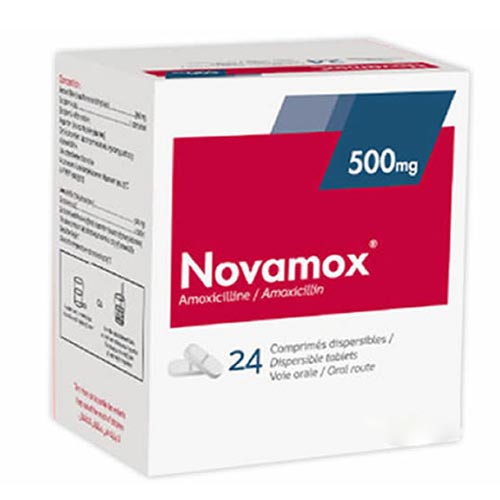Description
Amoxicillin is a broad-spectrum semisynthetic antibiotic similar to ampicillin except that its resistance to gastric acid permits higher serum levels with oral administration. Amoxicillin is commonly prescribed with clauvanic acid (a beta lactamase inhibitor) as it is susceptible to beta-lacatamase degradation.
Amoxicillin is used for the treatment of infections of the ear, nose, and throat, the genitourinary tract, the skin and skin structure, and the lower respiratory tract due to susceptible (only b-lactamase-negative) strains of Streptococcus spp. (a- and b-hemolytic strains only), S. pneumoniae, Staphylococcus spp., H. influenzae, E. coli, P. mirabilis, or E. faecalis.
Also for the treatment of acute, uncomplicated gonorrhea (ano-genital and urethral infections) due to N. gonorrhoeae (males and females).
Amoxicillin is also sometimes used together with another antibiotic called clarithromycin (Biaxin) to treat stomach ulcers caused by Helicobacter pylori infection. This combination is sometimes used with a stomach acid reducer called lansoprazole (Prevacid).
Pharmacodynamics
Amoxicillin is a moderate-spectrum antibiotic active against a wide range of Gram-positive, and a limited range of Gram-negative organisms. It is usually the drug of choice within the class because it is better absorbed, following oral administration, than other beta-lactam antibiotics. Amoxicillin is susceptible to degradation by β-lactamase-producing bacteria, and so may be given with clavulanic acid to increase its susceptability. The incidence of β-lactamase-producing resistant organisms, including E. coli, appears to be increasing.
Amoxicillin is sometimes combined with clavulanic acid, a β-lactamase inhibitor, to increase the spectrum of action against Gram-negative organisms, and to overcome bacterial antibiotic resistance mediated through β-lactamase production.
Associated Conditions: Acute maxillary sinusitis caused by M. catarrhalis, Bronchiectasis, Community Acquired Pneumonia (CAP), Duodenal ulcer caused by helicobacter pylori, Erysipeloid, Infective Endocarditis, Lower Respiratory Tract Infection (LRTI), Lyme Neuroborreliosis, Otitis media bacterial, Sinusitis, Skin and Subcutaneous Tissue Bacterial Infections, Streptococcal Pharyngitis, Streptococcal tonsillitis, Urinary Tract Infections (UTIs), Acute Gonorrhea, Uncomplicated Gonorrhea.
Mechanism of action
Amoxicillin binds to penicillin-binding protein 1A (PBP-1A) located inside the bacterial cell well. Penicillins acylate the penicillin-sensitive transpeptidase C-terminal domain by opening the lactam ring.
This inactivation of the enzyme prevents the formation of a cross-link of two linear peptidoglycan strands, inhibiting the third and last stage of bacterial cell wall synthesis. Cell lysis is then mediated by bacterial cell wall autolytic enzymes such as autolysins; it is possible that amoxicllin interferes with an autolysin inhibitor.
Side effects
All medicines may cause side effects, but many people have no, or minor, side effects.Some medical conditions may interact with Amoxicillin.
Tell your doctor or pharmacist if you have any medical conditions.
Common amoxicillin side effects may include: diarrhea, rash, nausea and vomiting.
This is not a complete list of all side effects that may occur. If you have questions about side effects, contact your health care provider.


Reviews
There are no reviews yet.